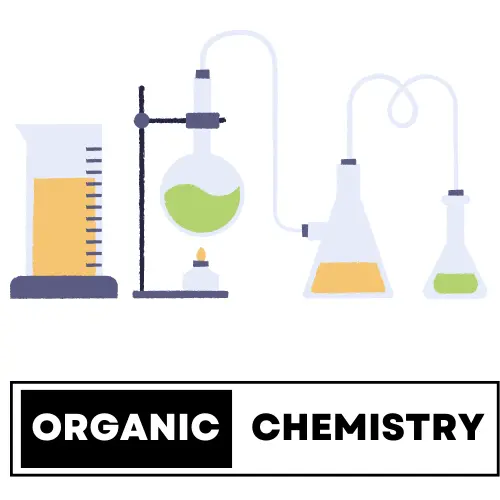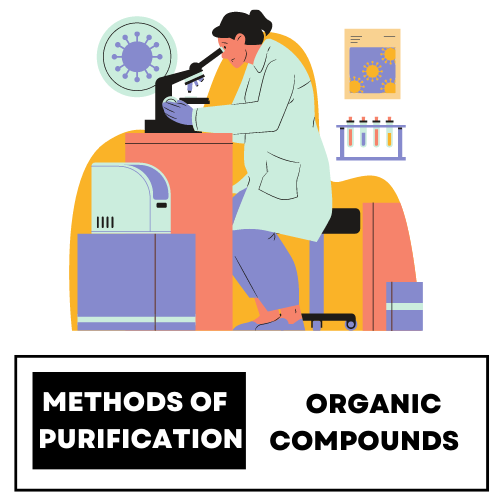Organic chemistry

I. Introduction to Organic Chemistry
Organic chemistry is a branch of chemistry that deals with the study of organic compounds, which are compounds made up of carbon and hydrogen atoms, along with other elements like nitrogen, oxygen, and halogens. Organic chemistry is concerned with the structure, properties, synthesis, and reactions of these compounds.
A Definition of organic chemistry
Organic chemistry is the scientific study of the structure, properties, and reactions of carbon-containing compounds.
B Importance of organic chemistry in daily life
B. Organic chemistry plays a crucial role in daily life, as it provides a fundamental understanding of the behavior and properties of materials and substances that are essential to modern society, such as fuels, drugs, plastics, and many other consumer products.
.C Brief history of organic chemistry
C. Organic chemistry has a long and fascinating history, dating back to the ancient Greeks and continuing through the scientific revolution of the 18th and 19th centuries, with many key discoveries made by notable chemists such as Robert Boyle, Joseph Priestley, Antoine Lavoisier, and Justus von Liebig. The field underwent significant development during the 20th century with the advent of new technologies and instrumentation, leading to the discovery of many new organic compounds and the development of novel synthetic methods.
Table of Contents
II Types of Organic Compounds

There are several types of organic compounds, including:
Hydrocarbons: These are compounds made up of only carbon and hydrogen atoms. They can be either saturated (alkanes) or unsaturated (alkenes and alkynes).
Alcohols: These are compounds that contain a hydroxyl (-OH) group attached to a carbon atom. They are commonly used as solvents and fuels.
Aldehydes and ketones: These are compounds that contain a carbonyl group (-C=O) and can be distinguished based on the location of the carbonyl group within the molecule. Aldehydes have the carbonyl group at the end of the carbon chain, while ketones have it in the middle.
Carboxylic acids: These are compounds that contain a carboxyl group ( COOH ) and can be recognized by their sour taste.
Esters: These are compounds that are formed from the reaction of a carboxylic acid and an alcohol. They have a characteristic fruity odor and are used in the synthesis of fragrances and flavorings.
Amines: These are compounds that contain nitrogen atoms and are often found in amino acids, the building blocks of proteins.
A. Hydrocarbons
Hydrocarbons are organic compounds that consist of only carbon and hydrogen atoms
B. Functional groups
Functional groups are specific groups of atoms that give organic compounds their characteristic properties and reactivity. Examples include alcohols, aldehydes, ketones, carboxylic acids, and amines.
C. Characteristics of organic compounds
Characteristics of organic compounds include having covalent bonding, low melting and boiling points, and often being flammable or combustible. They also tend to be less polar than inorganic compounds and can have a wide range of physical and chemical propert.
III Methods of Purification of Organic Compounds

Organic compounds can be purified through a variety of methods, including:
Distillation: This is a common method of purification that involves heating the mixture to boiling and collecting the distilled product. The boiling point of the desired compound is lower than that of impurities, so it can be separated based on their boiling points.
Crystallization: This method involves dissolving the mixture in a solvent, cooling the solution to form crystals, and then filtering out the crystals. The crystals are purer than the original mixture.
Sublimation: This method is used to purify solid compounds that can sublime, meaning they can go directly from a solid to a gas without becoming a liquid. The sublimed compound can be collected as a solid, leaving impurities behind.
Extraction: This method involves separating the desired compound from a mixture by dissolving it in a solvent. The mixture is then filtered and the solvent is evaporated, leaving behind the pure compounds
A. Distillation
Distillation is a process of separating components of a mixture based on differences in their boiling points.
B. Fractional distillation
Fractional distillation is a more precise form of distillation that involves using a fractionating column to achieve better separation of components with close boiling points.
C. Crystallization
Crystallization involves dissolving a solid in a solvent and then allowing it to slowly cool or evaporate, causing the solid to precipitate out in a purified form.
D. Sublimation
Sublimation involves the direct conversion of a solid into a gas without going through a liquid phase, and is useful for purifying certain solids that can undergo sublimation.
IV. Reactions in Organic Chemistry

Organic chemistry involves a wide range of reactions that can be classified into various categories, including:
- 1 Addition reactions: where a molecule is added to a double or triple bond in another molecule, resulting in a saturated product.
- 2 Elimination reactions: where a molecule is removed from a molecule, resulting in a double or triple bond being formed.
- 3 Substitution reactions: where one functional group is replaced by another functional group.
- 4 Rearrangement reactions: where the atoms in a molecule are rearranged to form a new molecule.
- 5 Oxidation-reduction reactions: where electrons are transferred between molecules, resulting in changes in oxidation states.
- 6 Acid-base reactions: where a proton is transferred between two molecules.
- 7 Condensation reactions: where two molecules combine, usually with the elimination of a small molecule such as water or alcohol.
- 8 Hydrolysis reactions: where a molecule is broken down by the addition of water.
These are just a few examples of the many types of reactions that can occur in organic chemistry.
A. Addition reactions
Addition reactions involve the addition of atoms or groups of atoms to a molecule, resulting in the formation of a new bond and an increase in the number of atoms in the molecule. For example, the addition of hydrogen to an alkene to form an alkane is an addition reaction.
B. Substitution reactions
Substitution reactions involve the replacement of one functional group in a molecule with another functional group. For example, the substitution of a hydrogen atom in an alkane with a halogen is a substitution reaction.
C. Elimination reactions
Elimination reactions involve the removal of atoms or groups of atoms from a molecule, resulting in the formation of a new multiple bond and a decrease in the number of atoms in the molecule. For example, the elimination of a hydrogen and a halogen from an alkyl halide to form an alkene is an elimination reaction.
D. Rearrangement reactions
Rearrangement reactions involve the rearrangement of the atoms within a molecule, usually resulting in the formation of a new molecule with a different molecular formula. For example, the rearrangement of a carbocation to form a more stable carbocation is a rearrangement reaction.
V. Alkanes

Alkanes are a class of organic compounds that contain only carbon and hydrogen atoms, and are characterized by having only single bonds between the carbon atoms. Alkanes are also known as “saturated hydrocarbons” because all the carbon-carbon bonds in the molecules are fully saturated with hydrogen atoms.
A. Definition and properties of alkanes
A.Alkanes are a type of hydrocarbon, which means they contain only carbon and hydrogen atoms. They are also known as “saturated hydrocarbons” because all of their carbon-carbon bonds are single bonds and they have the maximum number of hydrogen atoms possible. Alkanes have the general formula of CnH₂n+2, where “n” is the number of carbon atoms in the molecule. They are characterized by being nonpolar, insoluble in water, and having a high boiling point.
B. Structural formula and molecular formula of alkanes
The structural formula of alkanes shows the arrangement of carbon and hydrogen atoms in a molecule. The molecular formula, on the other hand, shows the actual number of each type of atom in the molecule. For example, the structural formula of methane ( CH₄ ) shows that it contains one carbon atom and four hydrogen atoms, while its molecular formula is C₁H₄
C. Nomenclature of alkanes
The nomenclature of alkanes involves naming the compounds based on the number of carbon atoms they contain. For example, alkanes with one carbon atom are called methane (CH₄), alkanes with two carbon atoms are called ethane (C₂H₆), alkanes with three carbon atoms are called propane (C₃H₈), and so on. The prefix “iso-“ is used to denote isomers, which are compounds with the same molecular formula but different structural formulas.
D. Reactions of alkanes
Alkanes have very limited chemical reactivity due to the presence of strong carbon-carbon bonds. However, they can undergo combustion reactions to produce carbon dioxide and water, and can also be halogenated (reacted with halogens such as chlorine or bromine) to form alkyl halides. In the presence of a catalyst, alkanes can also undergo cracking, which involves breaking down large alkanes into smaller ones.
VI. Alkenes and Alkynes

A. Definition and properties of alkenes and alkynes
Alkenes and alkynes are two types of unsaturated hydrocarbons, meaning that they contain one or more double or triple bonds between carbon atoms. Alkenes contain one double bond, while alkynes contain one triple bond. As a result, alkenes and alkynes have different physical and chemical properties compared to alkanes. For example, they are more reactive than alkanes and have lower boiling points.
B. Structural formula and molecular formula of alkenes and alkynes
B. The structural formula of alkenes and alkynes shows the arrangement of carbon and hydrogen atoms, as well as the double or triple bond(s). The molecular formula of alkenes is CnH₂n, where “n” is the number of carbon atoms in the molecule, while the molecular formula of alkynes is CnH₂n -2. For example, the structural formula of ethene (C₂H₄) shows it contains two carbon atoms and four hydrogen atoms, while its molecular formula is C₂H₄. The structural formula of acetylene (C₂H₂) shows it contains two carbon atoms and two hydrogen atoms, while its molecular formula is C₂H₂
C. Nomenclature of alkenes and alkynes
C. The nomenclature of alkenes and alkynes is similar to that of alkanes, with the suffix “-ene” being used for alkenes and “- yne” being used for alkynes. For example, alkenes with two carbon atoms are called ethene (C₂H₄), alkynes with two carbon atoms are called acetylene (C₂H₂), and so on. The position of the double or triple bond is indicated by a numerical prefix, for example, 1-butene and 2-butene are different isomers of butene (C₄H₈).
D. Reactions of alkenes and alkynes
D. Alkenes and alkynes are more reactive than alkanes due to the presence of the double or triple bond(s). They can undergo addition reactions, where a molecule adds across the double or triple bond to form a larger molecule. Alkenes can also undergo polymerization reactions, where many small alkene molecules join together to form a long chain polymer. Alkynes can undergo hydration reactions, where they react with water in the presence of an acid catalyst to form an alcohol. Alkynes can also undergo alkynylation reactions, where they react with alkyl halides to form alkyne derivatives.
VII. Conclusion
A. Summary of key points
In organic chemistry, we study the structure, properties, and reactions of carbon-based molecules, which play a crucial role in all aspects of life and industry. We have explored the basics of organic molecules, including alkanes, alkenes, alkynes, and arenes, as well as functional groups such as alcohols, aldehydes, ketones, and carboxylic acids. We also looked at the methods of synthesizing and analyzing these compounds, including distillation, extraction, and spectroscopy.
B. Importance of studying organic chemistry
Organic chemistry is essential for understanding the molecular basis of life, as well as for the development of medicines, plastics, and other materials. It provides a foundation for other fields such as biochemistry, medicinal chemistry, and materials science. Additionally, it offers practical skills such as problem-solving, critical thinking, and hands-on laboratory experience.
C. Suggestions for further study
To continue your studies in organic chemistry, it is recommended to read widely from reputable sources, attend lectures and workshops, and engage in independent research projects. You can also consider taking advanced courses in areas such as synthetic organic chemistry, biochemistry, and medicinal chemistry. Additionally, participating in internships or work experiences in related industries can provide valuable hands-on experience and opportunities for networking.
content
🌟Organic Chemistry: 5 Effective Methods of Purifying Compounds for Class 10-12 Students
